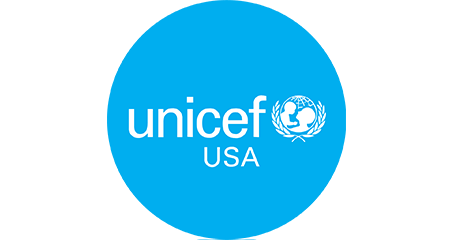NEW YORK (December 5, 2022) UNICEF today launched a $10.3 billion emergency funding appeal to reach more than 173 million people – including 110 million children – affected by humanitarian crises, the enduring effects of the COVID-19 pandemic worldwide and the growing threat of climate-impacted severe weather events.
“Today, there are more children in need of humanitarian assistance than at any other time in recent history,” said UNICEF Executive Director Catherine Russell. “Across the globe, they are facing a deadly mix of crises, from conflict and displacement to disease outbreaks and soaring rates of malnutrition. Meanwhile, climate change is making these crises worse and unleashing new ones. It is critical that we have the right support in place to reach children with decisive and timely humanitarian action.”
This year began with an estimated 274 million people in need of humanitarian assistance and protection. Throughout the year, these needs grew considerably, largely due to conflict, including the war in Ukraine; to rising food insecurity; to threats of famine brought about by climate-related and other factors; and to the devastating floods in Pakistan. Around the world, a resurgence of disease outbreaks including cholera and measles bring an additional danger to children in emergencies.
The lingering effects of the COVID-19 pandemic, and global economic disruption and instability, including inflation and the rising cost of food and fuel, have had a devastating impact on the lives and wellbeing of millions of the world’s most vulnerable children.
Climate change is also worsening the scale and intensity of emergencies. The last 10 years were the hottest on record and the number of climate-related disasters has tripled in the last 30 years. Today, over 400 million children live in areas of high or extremely high-water vulnerability.
At the same time, children are crossing borders in record numbers, with their families or separated from them, or unaccompanied. Altogether, nearly 37 million children worldwide are displaced due to cascading crises, a level of displaced children not seen since the Second World War.
As part of its Humanitarian Action for Children, which sets out the agency’s 2023 appeal, UNICEF plans to reach:
- 8.2 million children with treatment for severe acute malnutrition.
- 28 million children with measles vaccinations.
- 63.7 million people with access to safe water for drinking and domestic needs.
- 23.5 million children, adolescents, and caregivers with access to mental health and psychosocial support.
- 16.2 million children and women with access to gender-based violence risk mitigation, prevention and/or response interventions.
- 32 million people with safe and accessible channels to report sexual exploitation and abuse by personnel who provide assistance to affected population.
- 25.7 million children with formal or non-formal education, including early learning.
The top five appeals by funding requirements for 2023 are for:
- Afghanistan-$1.65 billion
- Ukraine and Refugee Response- $1.058 billion
- Syrian Refugee Crisis- $867 million
- Democratic Republic of the Congo- $862 million
- Ethiopia- $674 million
“The devastating impacts of climate change are an ever-present threat to children,” said Russell. “Which is why we are prioritizing climate adaptation and resilience building as part of our humanitarian response. This will help us to reach children living through today’s crises, while also helping them and their communities prepare for those yet to come.”
Putting national and local organizations at the center of humanitarian operations is a key strategy in UNICEF’s humanitarian response. Key results in 2022 were made possible by UNICEF’s partnerships, including with humanitarian country teams, UN agencies, civil society and non-governmental organizations, national and local responders and resource partners. Notable results include:
- 23.8 million children vaccinated against measles.
- 2.6 million children treated for severe acute malnutrition.
- 28 million children accessing formal or non-formal education, including early learning.
- 13 million children, adolescents and caregivers accessing community-based mental health and psychosocial support.
- 25.9 million people accessing a sufficient quantity of safe water for drinking and domestic needs.
- 5.5 million people with access to safe channels to report sexual exploitation and abuse.
- 4.2 million women, girls and boys accessing Gender Based Violence (GBV) risk mitigation, prevention and/or response interventions
With humanitarian needs at an unprecedented high, UNICEF is calling on partners to increase support to life-saving humanitarian response for children, maximizing the flexibility of this funding, prioritize climate-adaptive anticipatory action and preparedness efforts, urgently adopt no-regrets approaches to preparedness and response, and ensure equitable and principled humanitarian assistance.
# # # #
About UNICEF
The United Nations Children’s Fund (UNICEF) works in more than 190 countries and territories to pursue a more equitable world for every child. UNICEF has helped save more children’s lives than any other humanitarian organization, by providing health care and immunizations, safe water and sanitation, nutrition, education, emergency relief and more.
UNICEF USA advances the global mission of UNICEF by rallying the American public to support the world’s most vulnerable children. Together, we are working toward a world that upholds the rights of all children and helps every child thrive. For more information, visit www.unicefusa.org.
For more information please contact:
Jenna Buraczenski, UNICEF USA, (917) 720-1432, [email protected]
